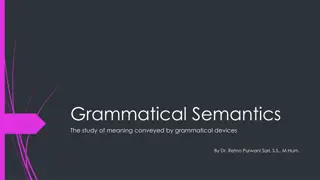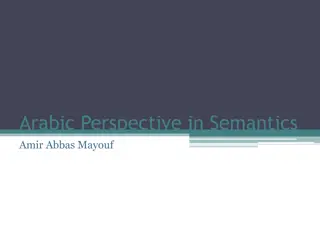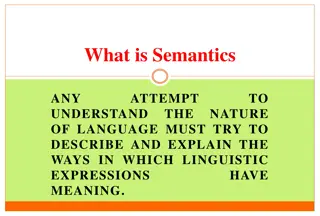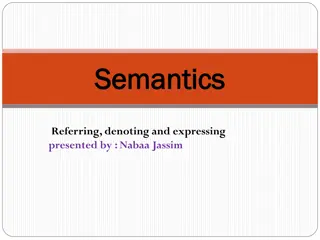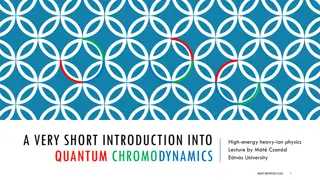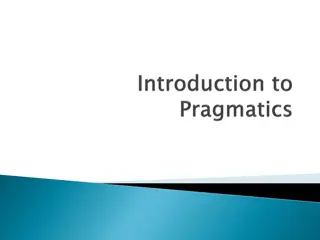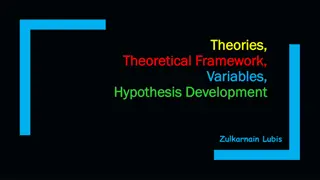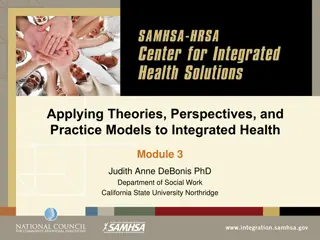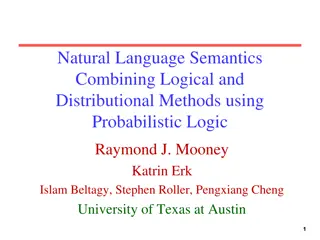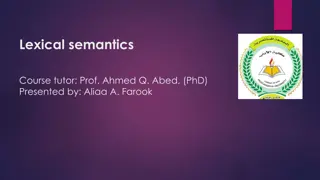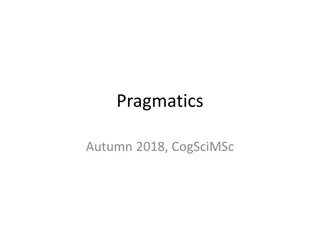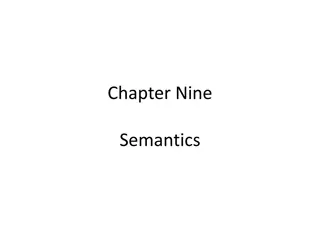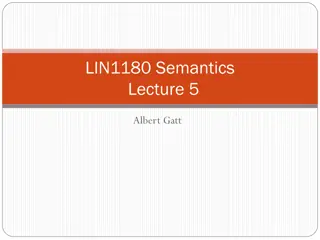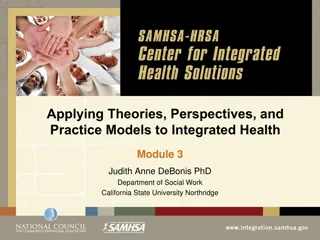Fundamentals of English Semantics: Key Concepts and Theories
English Semantics explores the study of meaning in human language, focusing on compositional characteristics and significantly underspecified meanings. It delves into the interconnected branches of linguistics, including phonetics, phonology, morphology, syntax, semantics, and pragmatics, each playing a vital role in understanding language structures and communication. The dynamics of how language elements combine to convey meaning are analyzed, highlighting the intricate relationship between linguistic components and real-world context. The article delves into the essence of semantics, providing insights into its significance in deciphering language complexities.
Download Presentation

Please find below an Image/Link to download the presentation.
The content on the website is provided AS IS for your information and personal use only. It may not be sold, licensed, or shared on other websites without obtaining consent from the author. Download presentation by click this link. If you encounter any issues during the download, it is possible that the publisher has removed the file from their server.
E N D
Presentation Transcript
ENGLISH SEMANTICS Some Fundamental Concepts for Semantics Dr. Retno Purwani Sari, M.Hum.
The Definition of Semantics Semantics is the study of meaning in human language. (Allan, 2001:1) Characteristics of meaning: 1. Compositional 2. Significantly underspecified
Human Language and Linguistic Brances
Phonetics The physical side of linguistic utterances the articulation and perception of speech sounds (articulatory, acoustic and auditory) is the domain of phonetics. It is not a trivial task to study the physical properties of articulatory movements and the physical properties of acoustic phenomena related to spoken language. Thanks to the progress in sciences like acoustics, we have a body of significant findings.
Phonology What are the smallest meaning distinguishing units (=phonemes) in a given language? cat sat bat mat Speech sounds as physical entities may be infinitely varied, but when they function as elements in a language, as phonological units, they are highly constrained. Native speakers of any language intuitively know which sequences of speech sounds are words or could be words in their language.
Morphology Morphology: the structure of words and the smallest meaning-bearing units and how they combine into words:
Syntax Syntax: the formation of sentences, how words are combined to larger units than words, to phrases and sentences 1. *portrait Rembrandt painted that a 2. A portrait that Rembrand painted
SEMANTICS the study of MEANING in LANGUAGE.
Pragmatics Pragmatics is about the interaction of semantic knowledge with our knowledge of the world, taking into account context of use.
How does compositional work Killed, crocodile, hunter, the, the The hunter killed the crocodile The crocodile killed the hunter Horseback, polo, played, is, on Horseback is played on polo.* Polo is played on horseback
Meaning is significantly underspecified Last night the king of France fell of her bike while playing polo. The sentence may describes falsity in truth condition. It is nonsense. The value depends on knowledge (both linguistic and non-linguistic) or experience and intuitions of the analyst. It is known that: [i] There is no longer a King of France; [ii] Polo is played on horseback not bikes; [iii] Her cannot normally refer to a king. Covidmoron
References Allan, Keith. (2001). Natural Language Semantics. USA: Wiley-Blackwell. Griffiths, P. (2006). An Introduction to English Semantics and Pragmatics. Edinburgh University Press Ltd.




